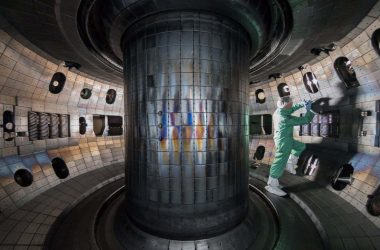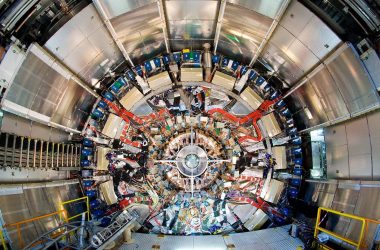The Great Pyramid at Giza, Egypt, has a hidden corridor that has now been mapped using cosmic rays
MuYeeTing/Getty Images
A previously undiscovered passage buried deep in the 4500-year-old Great Pyramid of Giza in Egypt has been meticulously mapped for the first time – and scientists have also peered inside it using an endoscopic camera.
The hidden corridor was first detected in 2016, but researchers were hesitant to cause any damage to the monument in order to gain access. The Great Pyramid of Giza is the lone remaining wonder of the ancient world and stood as the world’s tallest human-made structure for thousands of years at a height of 146 meters. It was constructed around 2560 BC during the reign of Pharaoh Khufu.
An international team of researchers employed a technique called cosmic-ray muon radiography, developed by academics at Nagoya University in Japan, to confirm that the corridor measures 9 meters in length, with a cross-section of approximately 2 meters by 2 meters.
Cosmic-ray muon radiography involves tracking the movement of muons, which are particles that pass through the pyramid as a result of cosmic rays. These muons are a form of natural radiation that constantly bombard the Earth’s surface. By employing muon detectors positioned in various locations around the pyramid, researchers can determine the level of muons passing through the structure. Since muons are partially absorbed by the stone used to construct the pyramids, this method enables researchers to identify hidden voids within.
This approach has been utilized to map the internal structures of pyramids since 1971, when it was initially employed at Giza.
The known corridors and rooms inside the Great Pyramid. The hidden corridor is located near the so-called north-face chevron area (labelled h)
Procureur et al. Nature Communications
With the detailed map of the corridor, the researchers identified an opportunity to investigate further. “We realized that it was so close to the surface that an endoscopy was possible,” says Sébastien Procureur at the University of Paris-Saclay in France.
They inserted a small camera, similar to those used in medical procedures, to get the first glimpse of the corridor in millennia.
“We knew the void was there, but it’s a completely different experience when you actually see it,” says Procureur. “It was a strange feeling.”
However, Procureur is relieved about one thing. “It may be a controversial opinion, but I’m glad the cavity was empty. I wouldn’t have wanted to be involved in the opening of a tomb.”
Topics:












